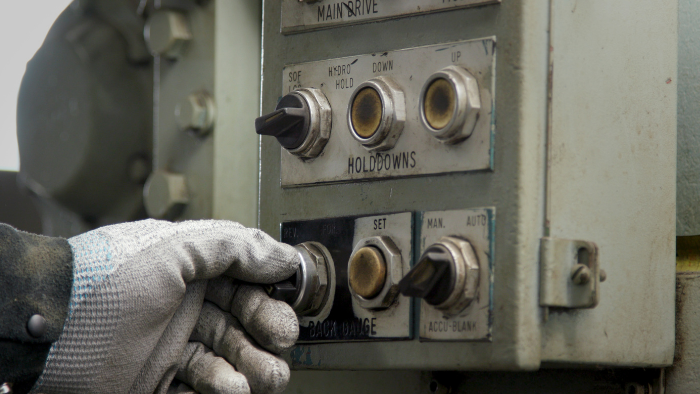Proper Hospital Facility Maintenance Saves Lives
When most people think of hospitals, they think of buildings full of the latest technologies designed to save lives and restore health. They think of highly educated healthcare professionals who are well versed on current research and who have their patients’ best interests in mind. Beyond noticing whether the physical surroundings are clean and in order, most individuals give very little thought to healthcare facilities themselves.
Although facility management often falls to the backdrop of healthcare, proper maintenance of buildings, systems and equipment is a critical part of providing quality healthcare to the patient population. In fact, a lack of solid facility management can put hospitals and other medical facilities at risk.

Prioritize Health and Safety
Hospitals are frequently large, complex facilities that may require a significant amount of facility management to operate well. Like all organizations, hospitals have limited budgets set aside for facility management. Regardless of facility size and budget, it’s important to place maintenance tasks that have a direct impact on the health, safety and wellbeing of patients, staff and visitors at the top of the priority list.
For example, many hospitals must maintain a number of backup systems – systems that may never be used – including power generation systems and extra medical equipment. While it requires extra planning and investment, preparing for emergencies that never happen is necessary to protect the health and wellbeing of people onsite and to avoid potential legal actions and lawsuits from negligence.
Infection Control
Cleaning, sanitation and disinfection have always been important priorities for hospitals. Cleaning protocols became even more of a focus during the COVID-19 global pandemic. Facility management plays a large role in helping control the spread of infection, particularly through the maintenance of hospital ventilation and filtration systems that can reduce the spread of airborne diseases.
Facility management may be responsible for maintaining ultraviolet light rooms and other UV equipment. Sinks, showers and other water distribution systems may require maintenance, cleaning, disinfection and special installations to minimize the spread of waterborne infections.
Integrated Fire and Alarm System
One of the most basic facilities management priorities for a hospital is an operational fire and alarm system. Because most healthcare facilities operate a wide range of equipment and systems that have some fire risk, both the fire system and alarm system should be well integrated to the daily operations of the entire hospital.
For example, a fire sprinkler system will only be effective if the fire incident can be adequately contained and a working alarm system can quickly notify the local fire department. The National Fire Protection Association (NFPA) provides comprehensive codes and standards designed to provide fire protection for hospitals. These standards provide detailed recommendations for gas and vacuum systems; heating, ventilating and air conditioning (HVAC) systems; electrical and telecommunications systems; and electrical plumbing equipment.
In the United States, The Joint Commission (TJC) is responsible for accrediting healthcare organizations such as hospitals with a goal of “zero harm.” Although accreditation is not mandatory, hospitals that have earned and maintained certification from TJC illustrate they have prioritized facilities management and undergo complete audits every three years.
Managing Reactive, Preventive and Predictive Maintenance
The myriad of systems and equipment used in hospitals must remain in good working order to provide quality patient care. Some critical equipment may require specialized maintenance and care as well as backup units, while other non-critical systems may need only occasional repair and upkeep.
Facilities management often encompasses oversight for a majority or all of those systems. A good maintenance system will include a computerized solution that can organize and assign work orders when equipment breaks down and schedule preventive maintenance tasks to keep systems running dependably. This may include things like regular cleaning and inspection of HVAC systems and testing and inspection of fire system equipment or alarm systems. Today, facility managers can leverage sensor technology to continuously monitor things like temperature and humidity to keep sensitive medical equipment operating effectively.

Maintenance and management of a warranty database is also an important part of facility management, especially with expensive, state-of-the-art medical equipment. Ensuring warranty information is available before repairs are made can save significant dollars. In some cases, facility management staff may need to adhere to maintenance tasks and schedules recommended by the manufacturer to keep warranties valid.
Failing to address ongoing maintenance issues could not only result in higher expenses and operational inefficiencies, but can also contribute to an increased risk of harming patients and medical staff as well as expensive legal action.
Maximizing Non-Critical Maintenance Services
Once health- and safety-related facility management priorities have been addressed, most hospitals still have a long list of non-critical maintenance issues to be handled. Facility management teams can maximize their effectiveness by establishing longer-term pricing agreements with vendors who may be willing to negotiate some level of preventive maintenance on an ongoing basis.
In addition, the Centers for Medicare and Medicaid Services have allowed alternative equipment maintenance guidelines for machines that do not affect patient health and safety. By taking advantage of these recommendations, hospitals may be able to stretch their maintenance budgets to manage more aspects of facility management.
Conclusion
By establishing a solid facility management system in hospitals, management teams protect the health and wellbeing of patients, visitors and staff. While facility management is not top of mind for most people, it plays a critical role in the foundation of a high-quality hospital or healthcare facility. Maintenance tasks that have a direct impact on patient care must come first, including infection control and fire system management. Other reactive and preventive maintenance tasks should then be planned to maximize the remaining resources so that the hospital facility runs efficiently and effectively.


